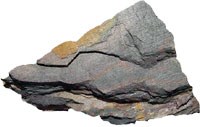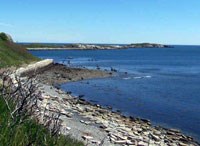
Removing ballast from the Harbor Islands—the second type of quarrying—may have begun in the 17th century or even earlier, but is well documented in the 19th, when the city became concerned about erosion of the islands, which were thought to protect the harbor. As early as 1818 the state required a license be obtained from the Boston selectmen to remove “earth and stones” from Bird Island, which even by 1794 had eroded to such an extent that it was only above water at low tide (Boston City Document 1853:27–28; Pemberton 1794:295). This law was apparently not well enforced, for in 1827, when Mayor Josiah Quincy was trying to obtain legislation and appropriations to protect the Harbor Islands against erosion, he mentioned the continuing practice of taking ballast and sand from Bird Island as well as from the sand spit extending southwest from Great Brewster (Quincy 1852:119). Quincy’s efforts to prevent erosion of the Harbor Islands also included references to taking ballast from Georges and Lovells. He said that in 1823, for example, the sale of stone and gravel from those islands had contributed to the fact that half of Georges had eroded away (Quincy 1852:117). 
What remains… Evidence of the quarrying that took place on some islands is still visible. On Outer Brewster, for example, there is stone debris on the ground and the canal that the Austins cut partially through the east end of the island in order to create a protected anchorage. The house foundation located on the island by a 1974 archaeological survey (Luedtke 1975:86) may also have been associated with this quarry. Evidence of the 19th-century quarrying on Slate is also still apparent (Klein 2008:128) but it is not known whether any remains of the 17th-century quarrying on that island are still visible. Prepared by Nancy S. Seaholes, 2009 References |
Last updated: February 26, 2015
